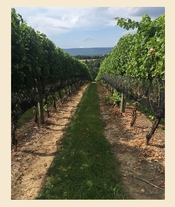 But not everything remains the same here. One positive change is that today’s visitor is less apt to encounter wines made from hybrid and native American grapes. Among the words I never heard mentioned during a recent visit to the Keystone State were Marechal Foche, Baco Noir, Cayuga, Niagara, Chancellor. Instead, the outstanding wines I tasted included Albariño, Chardonnay, Grüner Veltliner, Merlot, and Pinot Noir. So much has changed over the last couple of decades that unless you’ve sampled some of Pennsylvania’s recent vintages, whatever you thought you knew about the wine scene here is probably wrong.
But not everything remains the same here. One positive change is that today’s visitor is less apt to encounter wines made from hybrid and native American grapes. Among the words I never heard mentioned during a recent visit to the Keystone State were Marechal Foche, Baco Noir, Cayuga, Niagara, Chancellor. Instead, the outstanding wines I tasted included Albariño, Chardonnay, Grüner Veltliner, Merlot, and Pinot Noir. So much has changed over the last couple of decades that unless you’ve sampled some of Pennsylvania’s recent vintages, whatever you thought you knew about the wine scene here is probably wrong.
Yes, you can still find wine made from hybrid grapes but the momentum has definitely shifted to the European vinifera grapes that are familiar to most American wine drinkers. And yes, you might still run across the occasional rustic winery using obsolete equipment, but more often what you’ll discover is state-of-the-art, mostly French and Italian presses, tanks, barrels and bottling lines. But do not think that Pennsylvania is striving to emulate the generally bold profile of California wine. If anything, the output here leans more towards the traditionally delicate complexity of Europe’s wines, aiming to translate the mystery of place and personality through finesse rather than power, and by emphasizing savory, spicy, floral, herbal, mineral and earth elements rather than the dominance of fruit and oak.
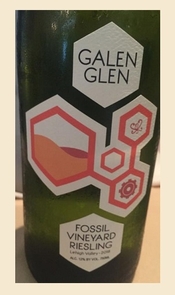 GALEN GLEN WINERY was the first revelation on my recent wine-oriented road trip through parts of Pennsylvania. Located high in the Blue Ridge foothills about midway between Scranton and Allentown, the winery sits on ancient glacial soils topping sea fossils that are millions of years old. As the sixth generation in his family to farm this land Galen Troxell is the winegrower, his wife Sarah C. Rhodes-Troxell (a chemist by training) makes the wines, and their daughter Erin Troxwell serves as “owner/winegrower in training.” Among the outstanding wines I tasted at Galen Glen was the bright, racy, savory 2018 Grüner Veltliner, as well as the 2003 Grüner that proved beyond doubt that Galen Glen knows how to produce a wine that will age beautifully. I was likewise impressed by Galen Glen’s Gewürztraminer, Pinot Blanc, Riesling and Cabernet Franc as well as by a couple of big, tannic reds made from Cabernet Dorsa and other German red grapes. The estate has 20 acres of vines and makes 6500 to 7000 cases of wine annually (the wines are distributed in Washington DC, Pennsylvania and Maryland).
GALEN GLEN WINERY was the first revelation on my recent wine-oriented road trip through parts of Pennsylvania. Located high in the Blue Ridge foothills about midway between Scranton and Allentown, the winery sits on ancient glacial soils topping sea fossils that are millions of years old. As the sixth generation in his family to farm this land Galen Troxell is the winegrower, his wife Sarah C. Rhodes-Troxell (a chemist by training) makes the wines, and their daughter Erin Troxwell serves as “owner/winegrower in training.” Among the outstanding wines I tasted at Galen Glen was the bright, racy, savory 2018 Grüner Veltliner, as well as the 2003 Grüner that proved beyond doubt that Galen Glen knows how to produce a wine that will age beautifully. I was likewise impressed by Galen Glen’s Gewürztraminer, Pinot Blanc, Riesling and Cabernet Franc as well as by a couple of big, tannic reds made from Cabernet Dorsa and other German red grapes. The estate has 20 acres of vines and makes 6500 to 7000 cases of wine annually (the wines are distributed in Washington DC, Pennsylvania and Maryland).
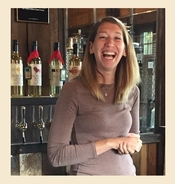 GALER ESTATE is a young winery nestled in the picturesque Brandywine Valley where it borders Longwood Gardens. Owned by Lele Galer and her husband Dr. Brad Galer this charming small estate produces about 2500 cases per year including Albariño, Chardonnay, Grüner Veltliner, Rosé (a Cab Franc/ Petit Verdot blend), and Cabernet Franc. “We’re small and we like it that way,” Lele Galer said. “We don’t do weddings or other events like that. What we do is make wine.” The iconic Lucie Morton was the estate’s first vineyard consultant. Having opened to the public eight years ago, Galer currently produces about 7000 to 8000 cases a year. I tasted the 2008 Sauvignon Blanc (fruit driven plus vibrant acidity); 2017 Sauvignon Blanc (lemony flavors and a refreshingly tart finish); Baron Red (65% Merlot, 35% Cabernet Franc a red blend that fills the mouth beautifully and finishes with soft tannins and good length); and 2015 Merlot (a svelte profile with the fruit melting into soft, grainy tannins on the finish). “We’re not making many reds—yet!” says winemaker Virginia Mitchell. So far, she says, Galer’s Cabernet Franc is the wine that most excites her.
GALER ESTATE is a young winery nestled in the picturesque Brandywine Valley where it borders Longwood Gardens. Owned by Lele Galer and her husband Dr. Brad Galer this charming small estate produces about 2500 cases per year including Albariño, Chardonnay, Grüner Veltliner, Rosé (a Cab Franc/ Petit Verdot blend), and Cabernet Franc. “We’re small and we like it that way,” Lele Galer said. “We don’t do weddings or other events like that. What we do is make wine.” The iconic Lucie Morton was the estate’s first vineyard consultant. Having opened to the public eight years ago, Galer currently produces about 7000 to 8000 cases a year. I tasted the 2008 Sauvignon Blanc (fruit driven plus vibrant acidity); 2017 Sauvignon Blanc (lemony flavors and a refreshingly tart finish); Baron Red (65% Merlot, 35% Cabernet Franc a red blend that fills the mouth beautifully and finishes with soft tannins and good length); and 2015 Merlot (a svelte profile with the fruit melting into soft, grainy tannins on the finish). “We’re not making many reds—yet!” says winemaker Virginia Mitchell. So far, she says, Galer’s Cabernet Franc is the wine that most excites her.
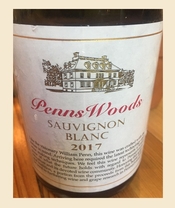 PENNS WOODS is a “semi-urban winery” according to its owner and winemaker Gino Razzi, referring to the fact that this quiet, pastoral estate is located only moments away from bustling Chadds Ford, 15 minutes from Wilmington DE and 35 minutes from Philadelphia. Razzi has been making wines in Pennsylvania for more than 40 years. Today, along with assistance from daughter Carley he is turning out a multitude of sophisticated wines including 2017 Sauvignon Blanc (not grassy, not stringent, not really fruity, just razor sharp, steely and slightly salty), and 2014 Reserve Chardonnay (round and still energetic despite its age). “Pinot Noir should be elegant, like a ballerina,” Razzi declares, and that’s what Penns Woods 2016 Reserve Pinot Noir has indeed achieved.
PENNS WOODS is a “semi-urban winery” according to its owner and winemaker Gino Razzi, referring to the fact that this quiet, pastoral estate is located only moments away from bustling Chadds Ford, 15 minutes from Wilmington DE and 35 minutes from Philadelphia. Razzi has been making wines in Pennsylvania for more than 40 years. Today, along with assistance from daughter Carley he is turning out a multitude of sophisticated wines including 2017 Sauvignon Blanc (not grassy, not stringent, not really fruity, just razor sharp, steely and slightly salty), and 2014 Reserve Chardonnay (round and still energetic despite its age). “Pinot Noir should be elegant, like a ballerina,” Razzi declares, and that’s what Penns Woods 2016 Reserve Pinot Noir has indeed achieved.
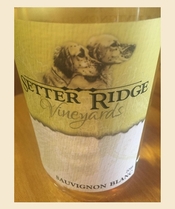 SETTER RIDGE VINEYARDS is tucked into the lovely rolling hills of Lehigh Valley outside Kutztown. The first vineyard was planted in 1998, and the state-of-the-art gravity flow winery began operation in 2010. Eleven grape varieties grow here where corn once reigned supreme (Tannat and Petit Verdot are the most recent plantings). More than a dozen Setter Ridge wines are currently produced. “It was an experiment to see how much money I could lose fast,” says owner Richard Blair with a wry smile. “I thought about all those guys my age who dream of getting a fancy Italian sports car. I decided to take the same amount of money and buy an Italian bottling line.” Setter Ridge 2016 Semillon-Sauvignon Blanc blend seduces the palate with bright flavors and texture. The 2014 Chardonnay is crisp and bright. The 2016 Syrah is rich, jammy and long in the mouth. And according to my notes the 2014 Stonehenge Vineyard Pinot Noir “jumps out and fills the senses with deliciousness.”
SETTER RIDGE VINEYARDS is tucked into the lovely rolling hills of Lehigh Valley outside Kutztown. The first vineyard was planted in 1998, and the state-of-the-art gravity flow winery began operation in 2010. Eleven grape varieties grow here where corn once reigned supreme (Tannat and Petit Verdot are the most recent plantings). More than a dozen Setter Ridge wines are currently produced. “It was an experiment to see how much money I could lose fast,” says owner Richard Blair with a wry smile. “I thought about all those guys my age who dream of getting a fancy Italian sports car. I decided to take the same amount of money and buy an Italian bottling line.” Setter Ridge 2016 Semillon-Sauvignon Blanc blend seduces the palate with bright flavors and texture. The 2014 Chardonnay is crisp and bright. The 2016 Syrah is rich, jammy and long in the mouth. And according to my notes the 2014 Stonehenge Vineyard Pinot Noir “jumps out and fills the senses with deliciousness.”
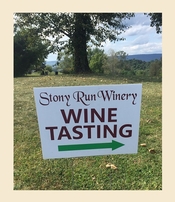 STONY RUN WINERY sits in Lehigh Valley’s scenic foothills about 60 miles northwest of Philadelphia near Hawk Mountain. The estate now grows 20 different grape varieties from Albariño to Cabernet Sauvignon, and produces 30 different wines. “Our goal when we started the winery in 2013 was to raise the bar on Pennsylvania wines,” owner Larry Shrawder told me. “We selected the best white varieties from around the world, including Austria’s Gruner Veltliner, Spain’s Albariño, Italy’s Pinot Grigio, New Zealand’s Sauvignon Blanc, and more. We also have all traditional five Bordeaux varieties.” In some ways Shrawder wants to reinvent Pennsylvania’s wine industry pretty much from the ground up. With the climate changing, he was convinced that local winegrowers no longer needed to depend on the previous generations’ hybrid and native grapes. “Everybody had a lot to say about what would and wouldn’t grow here,” he said, “so we planted everything we were interested in and then got rid of all the varieties that didn’t do well.” Stony Run is still in its relative infancy, but the wines already express a distinctly bold, assertive character. The 2017 Grüner Veltliner stands out for its long, crisp finish, while 2017 Riesling offers subtle floral notes and is notably soft and silky on the palate.
STONY RUN WINERY sits in Lehigh Valley’s scenic foothills about 60 miles northwest of Philadelphia near Hawk Mountain. The estate now grows 20 different grape varieties from Albariño to Cabernet Sauvignon, and produces 30 different wines. “Our goal when we started the winery in 2013 was to raise the bar on Pennsylvania wines,” owner Larry Shrawder told me. “We selected the best white varieties from around the world, including Austria’s Gruner Veltliner, Spain’s Albariño, Italy’s Pinot Grigio, New Zealand’s Sauvignon Blanc, and more. We also have all traditional five Bordeaux varieties.” In some ways Shrawder wants to reinvent Pennsylvania’s wine industry pretty much from the ground up. With the climate changing, he was convinced that local winegrowers no longer needed to depend on the previous generations’ hybrid and native grapes. “Everybody had a lot to say about what would and wouldn’t grow here,” he said, “so we planted everything we were interested in and then got rid of all the varieties that didn’t do well.” Stony Run is still in its relative infancy, but the wines already express a distinctly bold, assertive character. The 2017 Grüner Veltliner stands out for its long, crisp finish, while 2017 Riesling offers subtle floral notes and is notably soft and silky on the palate.
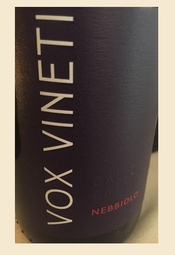 VOX VINETI is Latin for “voice of the vineyard,” and this estate most definitely embodies a carefully curated approach to wine growing. Tucked away in Lancaster County’s rural Andrew’s Bridge, Vox Vineti seems palpably alive in every respect, from the vineyard’s rocky schist-sandy loam-quartz soils, to the dynamic, small-batch wines themselves. Try 2018 “Discantus”, a dreamy blend of Barbera, Cabernet Franc, Cabernet Sauvignon and Nebbiolo, or 2015 “Polyphony,” an elegant, chewy, melodious ensemble of Cabernet Franc, Cabernet Sauvignon and Petit Verdot. The 2017 Nebbiolo whispers softly and flavorfully on the palate, while the 2018 Rosé (Barbera plus Cabernets Sauvignon and Franc) is juicy and nuanced. Under winegrower/owner Ed Lazzerini leadership native yeasts as well as French oak barrels of various ages and capacities are used here. Vox Vineti’s Old-World inspired wines are classy indeed.
VOX VINETI is Latin for “voice of the vineyard,” and this estate most definitely embodies a carefully curated approach to wine growing. Tucked away in Lancaster County’s rural Andrew’s Bridge, Vox Vineti seems palpably alive in every respect, from the vineyard’s rocky schist-sandy loam-quartz soils, to the dynamic, small-batch wines themselves. Try 2018 “Discantus”, a dreamy blend of Barbera, Cabernet Franc, Cabernet Sauvignon and Nebbiolo, or 2015 “Polyphony,” an elegant, chewy, melodious ensemble of Cabernet Franc, Cabernet Sauvignon and Petit Verdot. The 2017 Nebbiolo whispers softly and flavorfully on the palate, while the 2018 Rosé (Barbera plus Cabernets Sauvignon and Franc) is juicy and nuanced. Under winegrower/owner Ed Lazzerini leadership native yeasts as well as French oak barrels of various ages and capacities are used here. Vox Vineti’s Old-World inspired wines are classy indeed.
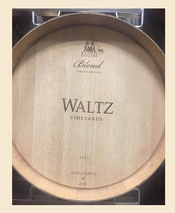 WALTZ VINEYARDS ESTATE WINERY is perched on a knoll overlooking a picturesque rural Lancaster landscape that looks as if it has not changed much since the Waltz family first started farming this land six generations ago. Owners of one of Pennsylvania’s earliest “modern” estates, Jan and Kimberly Waltz planted their first vines (Cabernet Sauvignon and Merlot) in 1997. Today the Waltzs have 25 acres under vine on their 125-acre site including Chardonnay, Muscat Canelli, Cabernet Franc and Semillon, all of which are producing very tasty wines. “With an elevation of 500 to 600 feet, 300 growing days, and well drained mostly shale soils, this is a unique site,” Jan Waltz tells me. When I ask what his main grape growing challenges are he answers, “Cold weather, and more recently, excessive rain. And birds, especially starlings.” Waltz operates three shops throughout Lancaster County, serves a growing wine membership by shipping to 25 states, and sells wine to a number of Pennsylvania restaurants.
WALTZ VINEYARDS ESTATE WINERY is perched on a knoll overlooking a picturesque rural Lancaster landscape that looks as if it has not changed much since the Waltz family first started farming this land six generations ago. Owners of one of Pennsylvania’s earliest “modern” estates, Jan and Kimberly Waltz planted their first vines (Cabernet Sauvignon and Merlot) in 1997. Today the Waltzs have 25 acres under vine on their 125-acre site including Chardonnay, Muscat Canelli, Cabernet Franc and Semillon, all of which are producing very tasty wines. “With an elevation of 500 to 600 feet, 300 growing days, and well drained mostly shale soils, this is a unique site,” Jan Waltz tells me. When I ask what his main grape growing challenges are he answers, “Cold weather, and more recently, excessive rain. And birds, especially starlings.” Waltz operates three shops throughout Lancaster County, serves a growing wine membership by shipping to 25 states, and sells wine to a number of Pennsylvania restaurants.
